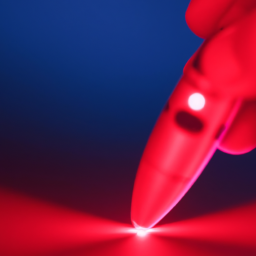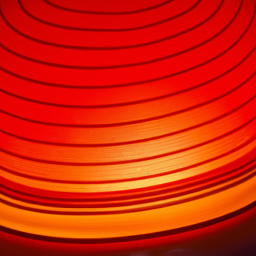In this article, you will be introduced to the fascinating world of photobiomodulation and gain a deeper understanding of the underlying science behind it. Photobiomodulation, also known as low-level laser therapy, is a non-invasive medical treatment that uses light to stimulate various cellular functions in the body. Through this in-depth exploration, you’ll uncover the incredible potential of this cutting-edge therapy and how it can enhance healing, reduce inflammation, and improve overall well-being. So, get ready to embark on a scientific journey that sheds light on the power of light itself.
What is Photobiomodulation?
Photobiomodulation, also known as low-level light therapy or phototherapy, is a non-invasive treatment that uses specific wavelengths of light to stimulate cellular activity and promote healing in the body. This therapy harnesses the power of light to interact with tissues, cells, and biochemical pathways, resulting in various benefits such as pain relief, tissue regeneration, reduced inflammation, and improved circulation.
Definition
Photobiomodulation involves the application of light energy to targeted areas of the body, penetrating into the tissues and triggering physiological responses. This therapeutic approach utilizes specific wavelengths of light, typically in the visible or near-infrared range, to interact with chromophores within the cells, leading to various biological effects.
History
The use of light for therapeutic purposes can be traced back thousands of years. Ancient cultures, such as the Egyptians, Greeks, and Romans, recognized the healing properties of sunlight and utilized it for treating various ailments. However, it was not until the 20th century that scientific research began to unravel the mechanisms behind the positive effects of light on living organisms.
In the 1960s, Hungarian researcher Endre Mester discovered the potential of low-level laser therapy (LLLT) in promoting wound healing and hair growth. Since then, numerous studies have been conducted to explore the wide range of applications for photobiomodulation, leading to its integration into modern healthcare practices.
Mechanisms of Photobiomodulation
To understand how photobiomodulation works, it is essential to explore the interactions between light and the body at the cellular and molecular levels.
Light and Tissue Interaction
When light enters the body, it can be absorbed by chromophores within the cells, such as cytochrome c oxidase, and initiate a cascade of photochemical reactions. This absorption of light energy triggers changes within the cells, leading to various biological responses.
The depth of light penetration depends on the wavelength and properties of the tissues. For example, near-infrared light can penetrate deeper into the body compared to visible light, allowing for the treatment of deeper tissues and organs.
Cellular Responses
Once absorbed by the cells, light energy activates a series of cellular responses. This includes the promotion of mitochondrial function and the production of adenosine triphosphate (ATP), which is the energy currency of the cell. Increased ATP production enhances cellular metabolism, providing the necessary energy for cellular processes and promoting tissue repair and regeneration.
Furthermore, photobiomodulation has been found to modulate cellular signaling pathways, leading to the release of growth factors, cytokines, and other molecules involved in tissue repair and inflammation modulation.
Biochemical Pathways
Photobiomodulation activates several biochemical pathways within the cells, mediating its therapeutic effects. Some of the key pathways involved include the nitric oxide (NO) pathway, which influences blood flow and vasodilation, and the reactive oxygen species (ROS) pathway, which plays a role in cellular signaling and antioxidant defense.
By influencing these pathways, photobiomodulation can promote wound healing, reduce inflammation, and improve overall tissue function.

The Effects of Photobiomodulation
Photobiomodulation has been shown to yield a wide range of positive effects on the body. Let’s explore some of its key benefits:
Pain Relief
One of the most well-established applications of photobiomodulation is the management of pain. By stimulating cellular activity and modulating inflammatory responses, photobiomodulation can alleviate pain associated with various conditions, such as arthritis, neuropathy, and musculoskeletal injuries. It can also have an analgesic effect post-surgery or dental procedures, providing a non-pharmacological approach to pain management.
Tissue Regeneration
Photobiomodulation promotes tissue regeneration by stimulating cellular proliferation and migration. The increased ATP production and activation of growth factors enhance the healing process of wounds, burns, and ulcers. It can also aid in the recovery of musculoskeletal injuries, promoting the regeneration of damaged tissues, such as tendons, ligaments, and muscles.
Reduced Inflammation
Inflammation is a natural response by the body to injury or infection, but when it becomes chronic, it can contribute to various diseases and conditions. Photobiomodulation has shown to modulate inflammatory responses by reducing the production of pro-inflammatory molecules, such as cytokines, and increasing the synthesis of anti-inflammatory mediators. This can lead to a reduction in pain, swelling, and overall inflammation.
Improved Peripheral Circulation
Photobiomodulation has the ability to enhance peripheral circulation by increasing blood flow and vasodilation. This can be beneficial for conditions that involve poor circulation, such as peripheral artery disease or diabetic neuropathy. Improved circulation can facilitate the delivery of oxygen and essential nutrients to tissues, promoting cellular repair and function.
Different Types of Photobiomodulation Devices
Photobiomodulation can be delivered through various devices, each utilizing different technologies to emit light. Some of the most common types of photobiomodulation devices include:
Low-Level Laser Therapy (LLLT)
Low-level laser therapy, also known as cold laser therapy, utilizes low-intensity lasers to deliver coherent light to targeted areas of the body. LLLT is often used for its precise targeting capability and can be applied using handheld devices or specialized laser systems.
Light-Emitting Diodes (LEDs)
LEDs emit non-coherent light at specific wavelengths, making them a versatile choice for photobiomodulation therapy. LED devices are often lightweight, portable, and can be used for both localized and full-body treatments. They are commonly employed in aesthetic and dermatological applications.
Infrared Therapy
Infrared therapy utilizes infrared light, typically in the near-infrared range, to penetrate deeper into the tissues. This type of therapy is often employed for pain relief, muscle recovery, and wound healing. Infrared devices can be in the form of lasers or LEDs, depending on the specific treatment requirements.
Polarized Light Therapy
Polarized light therapy involves the use of polarized light to deliver targeted photobiomodulation. This type of therapy is commonly used in combination with other treatment modalities, such as physical therapy or rehabilitation, to enhance their efficacy and promote faster recovery.

Applications of Photobiomodulation
Photobiomodulation has a wide range of applications across various fields of healthcare. Let’s explore some of the key areas where photobiomodulation has shown promising results:
Pain Management
As previously mentioned, photobiomodulation can provide effective pain relief for acute and chronic pain conditions. It can be used in conjunction with other pain management approaches or as a standalone therapy for conditions such as arthritis, fibromyalgia, and post-operative pain.
Wound Healing
Photobiomodulation has been extensively studied for its wound healing properties. By promoting cellular proliferation, angiogenesis, and collagen synthesis, it can accelerate the healing process of wounds, burns, and ulcers. It can also reduce the risk of infection and scarring, leading to better overall outcomes.
Muscle Recovery
For athletes and individuals engaging in physical activities, muscle recovery is crucial for optimal performance and injury prevention. Photobiomodulation can aid in muscle recovery by reducing inflammation, improving circulation, and promoting cellular repair. This can expedite the healing of muscle strains, sprains, and other soft tissue injuries.
Hair Growth Stimulation
Hair loss is a common concern for many individuals. Photobiomodulation has been found to stimulate hair growth by increasing blood flow to the hair follicles, promoting cellular metabolism, and modulating the activity of hair follicle stem cells. This can be beneficial for individuals experiencing hair thinning or androgenetic alopecia.
Photobiomodulation in Dentistry
The field of dentistry has also embraced the potential of photobiomodulation for various oral health applications. Let’s explore some of the benefits and applications of photobiomodulation in dentistry:
Benefits in Dentistry
Photobiomodulation offers several advantages in dentistry, including its non-invasive nature, absence of adverse side effects, and ability to provide targeted treatment. It can be used as a complementary therapy to enhance the outcomes of dental procedures and promote overall oral health.
Applications in Oral Health
In oral health, photobiomodulation has shown promising results in the treatment of oral ulcers, periodontal diseases, and post-operative healing. By promoting tissue regeneration, reducing inflammation, and enhancing the immune response, photobiomodulation can aid in the recovery and maintenance of oral health.
Treatment of Temporomandibular Disorders (TMD)
Temporomandibular disorders, characterized by pain and dysfunction in the jaw joint and surrounding muscles, can significantly impact an individual’s quality of life. Photobiomodulation has been found to alleviate pain, reduce muscle tenderness, and promote jaw function in individuals with TMD. It can serve as a non-invasive and drug-free approach to managing this common condition.

Photobiomodulation in Rehabilitation
Photobiomodulation has shown promising results in the field of rehabilitation, helping individuals recover from musculoskeletal injuries, neurological conditions, and surgery. Let’s explore some of the ways photobiomodulation can be utilized in rehabilitation:
Enhancing Physical Therapy
Incorporating photobiomodulation into physical therapy sessions can enhance the effectiveness of exercises and manual therapies. By promoting tissue repair, reducing pain, and improving circulation, photobiomodulation can aid in the recovery of range of motion, muscle strength, and functional abilities.
Speeding up Recovery
After surgery or injury, the body undergoes a healing process that can be lengthy and challenging. Photobiomodulation can expedite the recovery process by stimulating cellular activity, reducing inflammation, and enhancing wound healing. This can help individuals regain their mobility and function sooner.
Neurological Rehabilitation
Photobiomodulation has shown potential in neurological rehabilitation, particularly in the treatment of stroke, traumatic brain injury, and peripheral neuropathy. By modulating neural pathways, improving blood flow, and promoting neuroplasticity, photobiomodulation can aid in improving motor function, sensation, and overall neurological recovery.
Photobiomodulation in Dermatology
The field of dermatology has embraced the potential of photobiomodulation for various skin-related conditions and aesthetic purposes. Let’s explore some of the applications of photobiomodulation in dermatology:
Acne Treatment
Acne is a common skin condition characterized by the formation of pimples, blackheads, and whiteheads. Photobiomodulation has demonstrated the ability to reduce acne inflammation, inhibit bacterial growth, and promote tissue repair. This can lead to improved acne management and a reduction in post-inflammatory hyperpigmentation and scarring.
Scar Reduction
Photobiomodulation has been used as a non-invasive approach to reduce the appearance of scars. By promoting collagen synthesis and remodeling, and modulating inflammatory responses, it can improve the texture, color, and overall appearance of scars. This can be beneficial for individuals with surgical scars, traumatic scars, or acne scars.
Skin Aging Prevention
As individuals age, the skin undergoes various changes, such as the loss of collagen and elasticity, leading to the development of wrinkles and sagging. Photobiomodulation has been found to stimulate collagen synthesis, encourage fibroblast activity, and enhance skin elasticity. This can result in the reduction of fine lines, improved skin tone, and a more youthful appearance.
Safety Considerations and Precautions
While photobiomodulation is generally considered safe, there are important considerations and precautions that should be followed to ensure its optimal and safe use:
Dosage and Timing
The effectiveness of photobiomodulation is highly dependent on the dosage and timing of the treatments. Different conditions and tissues may require specific parameters, such as wavelength, power density, duration, and frequency. It is crucial to adhere to the recommended guidelines and consult with a healthcare professional or qualified practitioner.
Contraindications
There are certain situations and conditions where photobiomodulation may not be suitable or may require caution. This includes pregnancy, active cancer, photosensitivity disorders, and the use of certain medications that can increase light sensitivity. It is important to disclose any relevant medical history and medications to the healthcare professional conducting the treatment.
Potential Side Effects
Photobiomodulation is generally well-tolerated, with minimal side effects. However, some individuals may experience temporary redness, mild skin irritation, or slight discomfort during or after the treatment. These side effects are usually transient and resolve on their own. If any concerning or persistent side effects occur, it is important to seek medical advice.
Conclusion
Photobiomodulation, harnessing the power of light, has emerged as a promising therapeutic approach with wide-ranging applications in healthcare. By stimulating cellular activity, promoting tissue regeneration, reducing inflammation, and improving circulation, photobiomodulation offers a non-invasive and versatile treatment option.
From pain management and wound healing to dermatology and rehabilitation, photobiomodulation has shown beneficial effects across various fields. Its potential in dentistry, oral health, neurorehabilitation, and aesthetic treatments further demonstrates its versatility and expanding role in modern healthcare.
As research and technology continue to advance in the field of photobiomodulation, we can expect to uncover even more applications and refine treatment protocols, bringing us closer to fully harnessing the therapeutic potential of light in healthcare.

